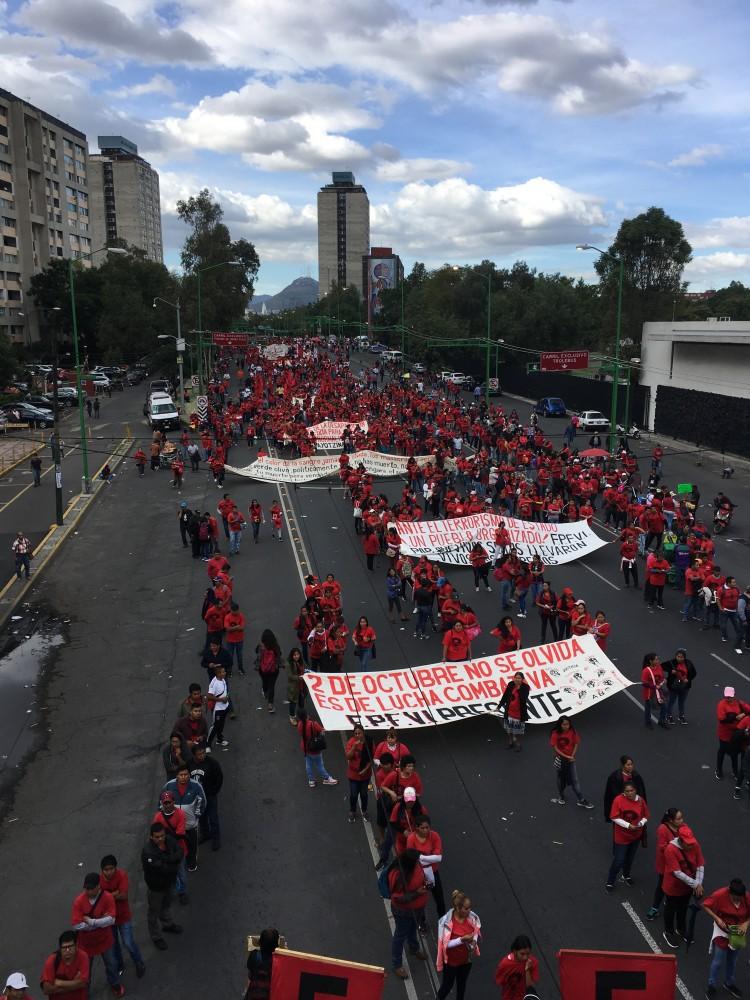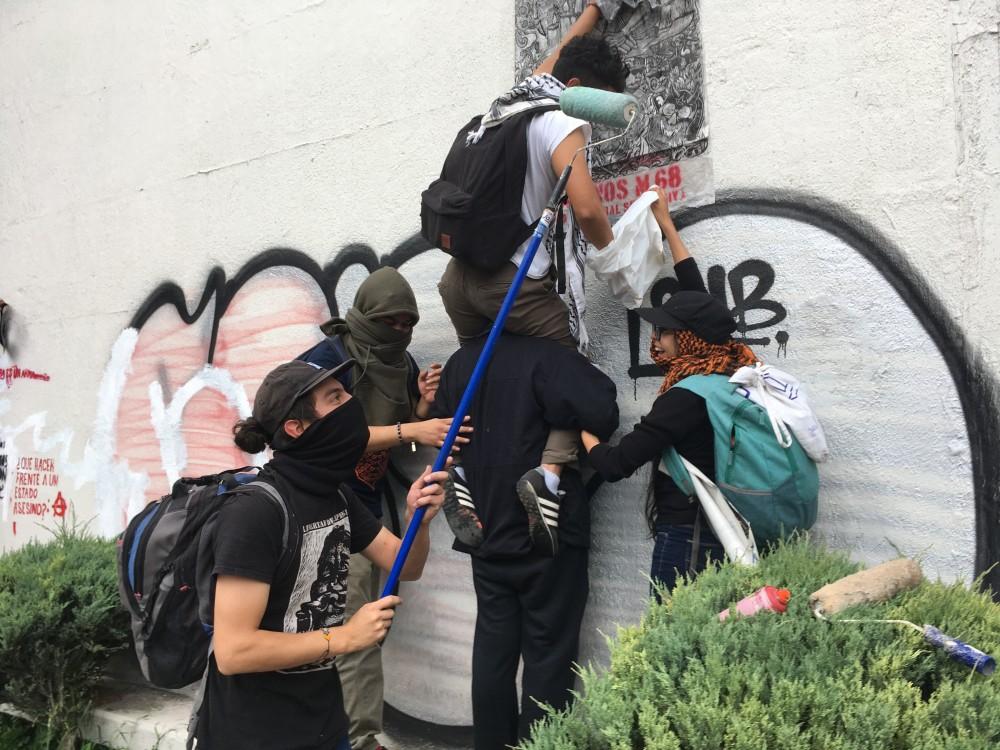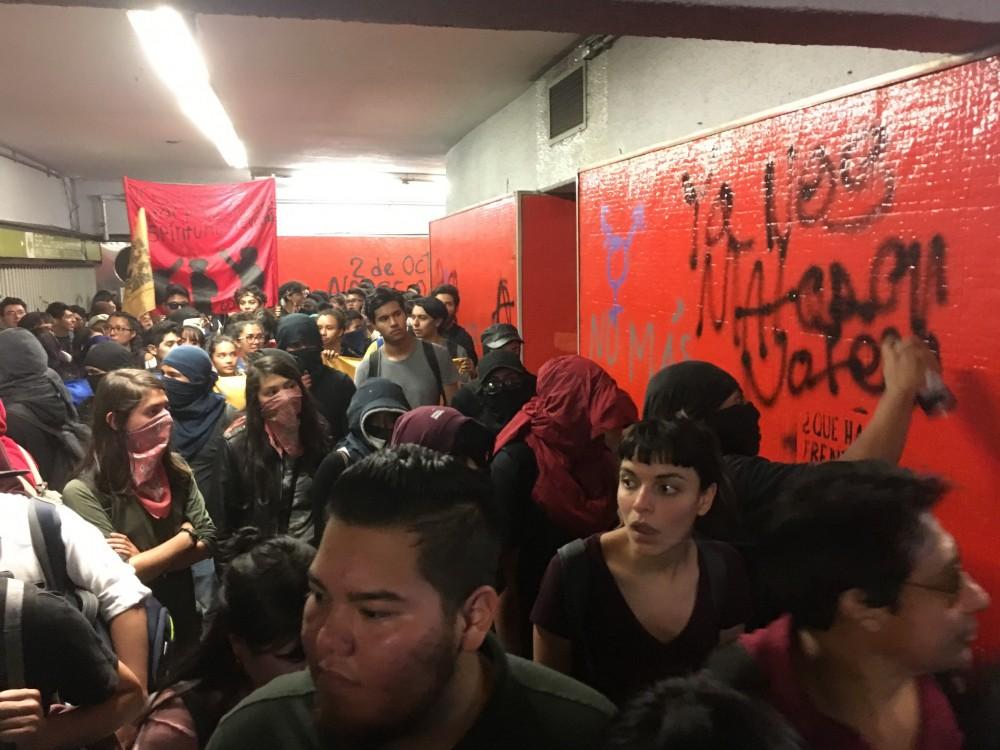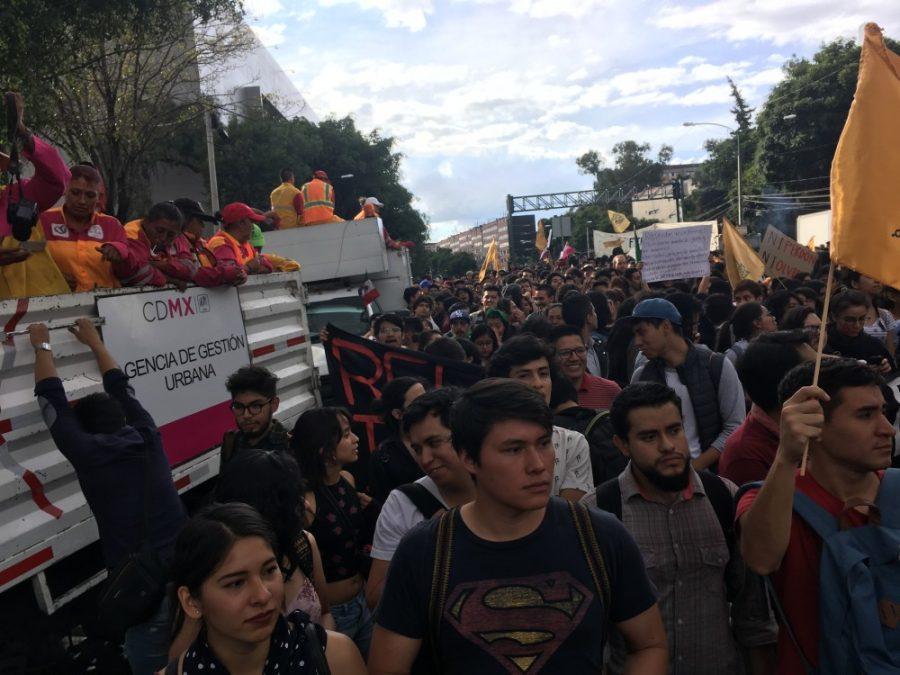MEXICO CITY — Last week, the University of Arizona remembered the historic student uprising in Mexico City, honoring its 50 year anniversary. Professors both local and from the National Autonomous University of Mexico, the largest university in Latin America, collaborated to commemorate the 1968 Mexican students who fought for both a more democratic educational system and also to keep the university virtually tuition-free.
Though hundreds were killed in the Oct. 2 massacre of Tlatelolco, the students triumphed, and today tuition remains at a rate of 25 peso cents per student.
The UA established a formal collaboration with UNAM in 2015, creating a UNAM Center for Mexican Studies in Tucson. Eugenia Allier, a professor at the Institute of Social research at UNAM, presented at the UA on Thursday, Sept. 27, commemorating the 1968 movement that “shifted history.”
Meanwhile, in Mexico City, students are remembering the movement of ‘68 differently. Just weeks before the 50th anniversary, students protesting peacefully at UNAM were attacked by a shock-gang, part of a network locally known as porros; now, once again, the students are mobilizing.
RELATED: Center connects UA and Mexico through international partnership
On Monday, Sept. 3, in Mexico City, high school and university students organized a demonstration on the enormous urban campus of UNAM. They were demanding an explanation for the recent kidnap and murder of high school student Miranda Mendoza and for better school conditions in general, including more security, more teachers and more transparency, when approximately 40 porros arrived and began attacking the students with pipes, knives, molotov cocktails, boots and fists.

“Porros are, among other things, groups of aggressors, golpeadores, who are paid by UNAM’s authorities or even sometimes by the same Mexican government, PRI. It’s sort of cataloged as a paramilitary group,” said Felix Roberto López Roldán, a philosophy student at UNAM.
Paramilitaries have been totally discredited in the country, however, according to William Beezley from the UA History Department. “No one in Mexico can rely on paramilitary again. But using porros is a way to get around it.”
In general, porros are technically students. It is less obvious they work for outside interests, sparking less public outrage.
In a recorded special message, UNAM Director Enrique Graue said the attack was staged by people “who represent outside interests that evidently want to destabilize the university,” though he failed to specify those with outside interest.
In the Sept. 3rd attack, cellphone footage captured UNAM security standing by, refusing to protect the protesters. One guard was recorded saying they had orders from above not to intervene.”
For two hours porros attacked, and UNAM’s security didn’t do anything — they were there and didn’t do anything,” said Camila Zuleta, a high school student from the protest.
Fourteen students were injured, and two hospitalized. “They got stabbed, and one girl got hit in the head with a pipe. One of them even got a piece of his ear ripped off,” López Roldán said.

These gangs of porros have historically been utilized to repress students in Mexico.
“Fifty to sixty years ago it was some students and young people working for the government specifically to try to control other students,” said Eugenia Allier, a UNAM professor who spoke at the UA last Thursday. “Now they try to control students, but it doesn’t work anymore. You cannot control half a million students, not in the same way as in ’68.”
Allier says now porros are only able to provoke, which is exactly what they did this September. Their attack provoked tens of thousands of students to take the streets in a new student movement, almost exactly 50 years after the last mass mobilization.
UNAM students and supporting faculty went on strike after the attacks, closing most of the facilities on the main campus. On Sept. 5, thousands of students rallied, turning the nearby metro stations and main campus into a sea of chanting bodies.
Again they mobilized on Sept. 13, marching miles through the streets of Mexico City to the Zócalo, the city center. UNAM faculty and employees, community members and participants from the 1968 Student Movement walked alongside current students in solidarity.
“The education model in México is very authoritarian and conservative. The student movement makes this structure shake,” said Dr. Hugo Luis Sánchez Gudiño, a UNAM professor of Political and Social Sciences.

Through assemblies, UNAM students from all faculties have collaborated to draft a petition of seven demands: punishment for both the puppets and puppeteers who were responsible for the Sept. 3 attacks, increased democratization of the university with more student, faculty and worker control and participation, increased funding for schools and students, increased security particularly for women, the eradication of porros, the removal of University Director Graue and of the university’s head of security and, lastly, the continuation of free tuition.
“The problem is the director, who is the highest authority in UNAM, is chosen by the government council, formed by people who are from the government, these last years from the PRI, so that has something to do with everything that’s passed at the school,” said UNAM biology student Vanessa Peláez, marching in the demonstration on Sept. 13. The students are demanding a system overhaul, making the director’s election a democratic process within the school itself.
These issues have been simmering for a long time, but the thing that made everything explode, made everyone take to the streets, was the attack of the porros, said Alejandra Lopez Lejano, a UNAM philosophy graduate.
“The movement is not just from UNAM but has extended to all the public education in the country. Even private universities are participating in topics that involve education and security.”
RELATED: Q&A: author Todd Miller on migration, the media and militarization
Yet this budding, country-wide movement has been largely absent from US and international mainstream media. Dr. Hugo suggests the imminent historical change of political power in Mexico could be responsible.
“Today, everyone wants to be well with the president-elect, because they have kept silent on the subject,” said Hugo. “Having dealt with the issue would have generated discomfort with the AMLO [president-elect] team.” said Lopez Lejano.
This December, PRI, the political party who held office for 77 of the past 89 years, will make way for the new leftist president-elect, Andrés Manuel López Obrador.
The UA, who established a formal collaboration with UNAM in 2015, is closer to the events in Mexico than others.
“It’s important for UA students and others to look at how students can be involved in politics and change, or attempt to change, their society,” said Beezley, who talked last Tuesday at the UA’s Special Program, Mexico 1968. He said students and teachers on both sides should adopt the attitude that “this is the chance to really learn from somebody else”.
Follow the Daily Wildcat on Twitter









